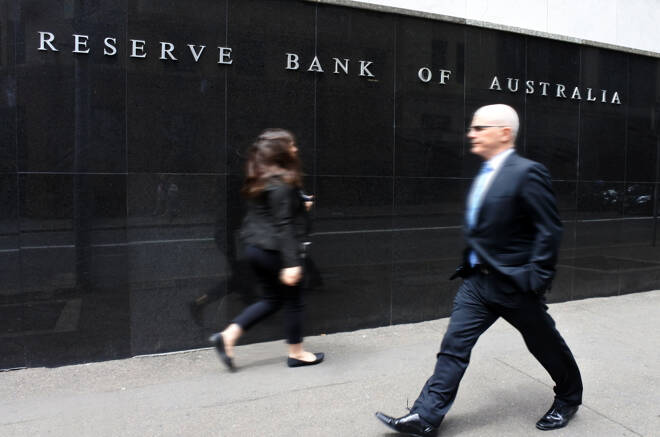Advertisement
Advertisement
The RBA Leaves Policy Unchanged, Shifting the Focus to the Budget
By:
The RBA stands pat on monetary policy this morning. Optimism from the RBA Statement provided Aussie Dollar support. Next up, the Budget.
The RBA once more left interest rates unchanged this morning, which had been widely anticipated by the broader market. In the October meeting, the Board decided to leave the targets for the cash rate and the yield on 3-year government bonds at 25 basis points. After last month’s expansion to the Term Funding Facility, there were also no further changes this morning.
The RBA Rate Statement and the Aussie Dollar
From the RBA Rate Statement this morning, salient points included:
Globally
- The global economy is gradually recovering, though the recovery remains uneven and dependent upon the containment of the virus.
- While infection rates have fallen in some countries, they have increased in others.
- China’s recovery is the most advanced.
- Global inflation remains very low and below central bank targets.
Financial Markets
- Volatility remains low and the prices of many assets have risen substantially despite the high level of economic uncertainty.
- Bond yields remain at historically low levels, as are interest rates for most businesses and households.
- The Aussie Dollar remains just below its peak of the past couple of years.
Australian Economy
- In spite of the sharp contraction in the 2nd quarter, the decline in output was smaller than in most other countries.
- A recovery is underway in most of Australia. A 2nd wave outbreak in Victoria, however, resulted in a further contraction in output there.
- While a recovery is underway, it is likely to be both uneven and bumpy. It will be some time before the level of output returns to its end 2019 level.
- Labor market conditions have improved somewhat over the past few months. The unemployment rate is, therefore, likely to peak at a lower rate than previously expected.
The Board
- Is committed to doing what it can to support jobs, incomes, and businesses in Australia.
- Its actions, including last month’s decision to expand the Term Funding Facility, are keeping funding costs low, assisting with the supply of credit.
- The Board will maintain highly accommodative settings as long as is required. Additionally, the Board continues to consider how further monetary measures could support the recovery.
- It will not increase the cash target rate until progress is made towards full employment and it is confident that inflation will be sustainably within the 2-3% target band.
In response to the RBA decision and comments within the rate statement, the Aussie Dollar rose from $0.71886 to $0.72087 before easing back.
At the time of writing, the Aussie Dollar was up by 0.11% to $0.71867.
What Lies Ahead?
The RBA continues to see the containment of the coronavirus as the key to economic recovery.
The last outbreak in Victoria and rising cases in some geographies continue to pose a threat to the ongoing recovery.
Consumers and businesses will need to remain confident that the government is taking the appropriate measures to prevent another lockdown.
For the Aussie Dollar, we continue to see consumer confidence and employment conditions as key.
The positive view on employment conditions was certainly a boost for the Aussie Dollar this morning.
A faster than expected recovery in labor market conditions should translate into better than expected consumption figures. This should then fuel a more rapid economic recovery and provide price stability.
Next week, employment numbers for September will therefore be critical. A positive set of numbers should fuel further upside for the Aussie Dollar.
The Budget
As highlighted by the RBA, the 2020 federal budget should also support the economic recovery. The government will announce the budget later today.
There will be plenty of focus on the government’s steps to restore confidence and support an economic recovery.
Tax cuts are amongst the anticipated moves to drag the economy out of a recession.
About the Author
Bob Masonauthor
With over 28 years of experience in the financial industry, Bob has worked with various global rating agencies and multinational banks. Currently he is covering currencies, commodities, alternative asset classes and global equities, focusing mostly on European and Asian markets.
Advertisement
